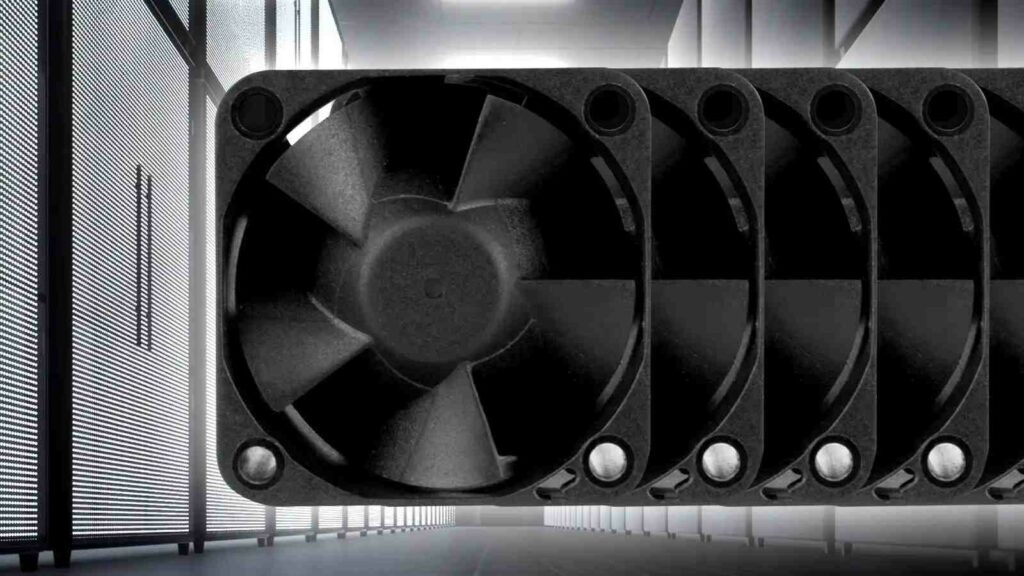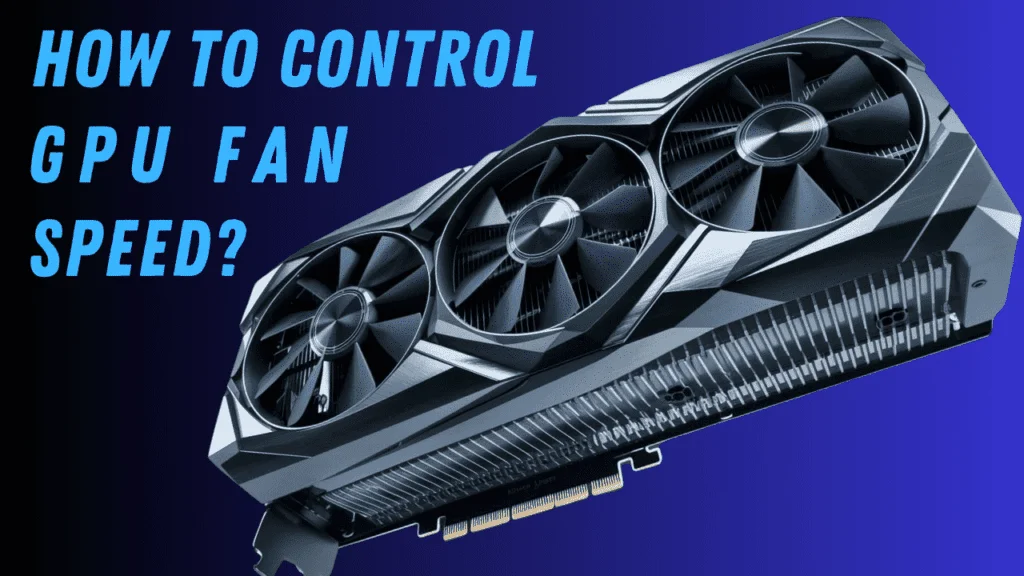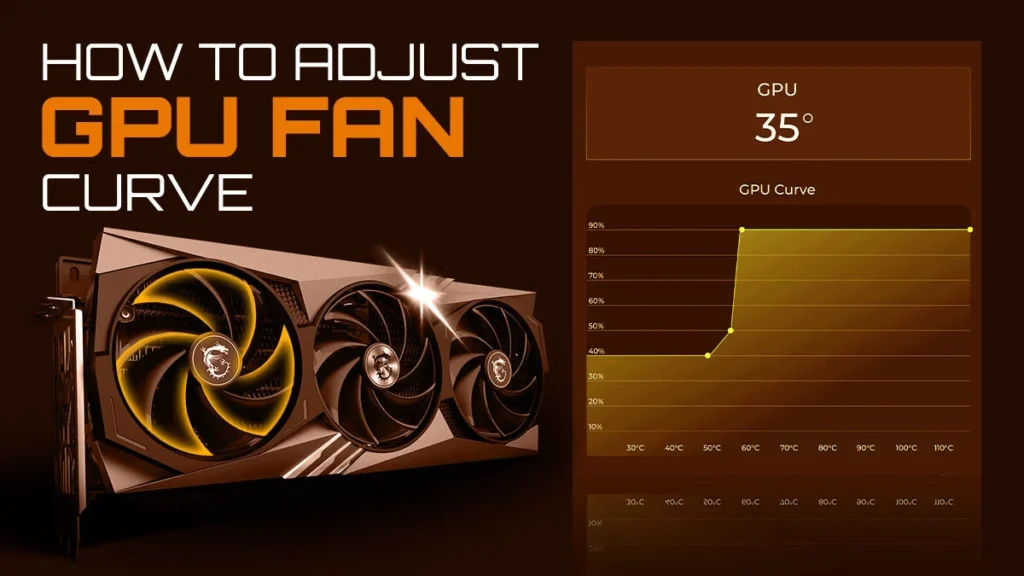Table of Contents
I noticed my GPU fans kept turning on and off while gaming, which had me worried about potential overheating. After some research, I found it’s normal for the fans to idle at lower temps and kick in only when needed. Adjusting the fan curve in my GPU software helped smooth out the fluctuations.
If your GPU fans keep turning on and off, it can be frustrating and concerning. This behavior is often linked to temperature control, where the fans activate only when the GPU reaches certain heat levels to optimize performance and reduce noise.
Stay tuned with us as we dive into the reasons behind “Why My GPU Fans Keep Turning On and Off.” We’ll explore common causes, share troubleshooting tips, and help you understand whether it’s normal or something that needs attention!
Why Do My GPU Fans Keep Turning On and Off?

Your GPU fans turn on and off because they respond to temperature changes. When the GPU gets hot, the fans start to cool it down. When the temperature drops, the fans stop to save energy and reduce noise. This is normal behavior for most modern GPUs. If the fans keep turning on and off rapidly, you might need to check your fan settings or clean out dust.
Is It Normal for GPU Fans to Turn On and Off Frequently?
Yes, it’s normal for GPU fans to turn on and off frequently. Most modern GPUs are designed to keep the fans off at low temperatures to reduce noise and power consumption. The fans will start spinning when the GPU reaches a higher temperature, usually during tasks like gaming or video editing. If the fans turn on and off too often, it could be due to temperature fluctuations or specific fan settings.
Can-Fan Settings in the GPU Software Cause Fans to Turn On and Off?
Can-Fan Settings in the GPU Software Affect Fan Behavior:
Yes, fan settings in your GPU software can control when the fans turn on and off. Many software programs allow you to customize how your GPU fans react to temperature changes.
What Is a Fan Curve in GPU Software:
A fan curve is a setting that adjusts fan speed based on GPU temperature. If set too low, fans may turn on and off more frequently, causing fluctuations.
Can Changing Fan Curves Stop Fans from Turning On and Off:
Yes, adjusting the fan curve can help. Setting a more gradual increase in fan speed can reduce how often the fans turn on and off.
Does Auto Fan Mode in Software Affect Fan Activity:
In auto mode, the software manages fan speed based on temperature. This can cause the fans to turn on and off more often if the temperature fluctuates within a narrow range.
Should I Manually Adjust Fan Settings to Prevent Frequent On/Off Cycles:
If the frequent turning on and off bothers you, manually adjusting the fan curve or switching to a more constant fan speed can help keep the fans running more smoothly.
Read More: How To Tell If GPU Is Dying – Essential Tips to Save Your PC!
Do GPU Fans Only Turn On When They Reach a Certain Temperature?
Yes, GPU fans only turn on when the temperature reaches a set level. Most modern GPUs are designed this way to save energy and reduce noise when the system is cool. The fans stay off when the GPU is idle or under light use. As the temperature rises during heavier tasks, like gaming or video editing, the fans start spinning to cool the GPU. This automatic control helps manage heat without running the fans all the time.
How Can I Stop My GPU Fans from Turning On and Off Constantly?

How Can I Adjust Fan Settings to Reduce On and Off Cycles:
You can adjust the fan settings in your GPU software by creating a custom fan curve. This allows the fans to run more consistently at lower speeds, preventing them from turning on and off too frequently.
Is Cleaning the GPU a Solution to Stop Fan Fluctuations:
Dust buildup can block airflow, causing the fans to turn on and off more often. Cleaning your GPU regularly can help improve airflow and reduce the frequency of fan activity.
Should I Set a Constant Fan Speed:
Setting a constant fan speed in your GPU software can keep the fans running steadily, avoiding constant on-and-off cycles. However, this may increase noise and power usage.
Can Updating the GPU Drivers Help:
Outdated GPU drivers might cause erratic fan behavior. Make sure your GPU drivers are up to date, as new versions often include performance improvements that stabilize fan control.
Will Reducing GPU Load Stop Frequent Fan Changes:
Reducing the GPU’s workload, such as lowering in-game graphics settings, can help keep the temperature more stable, leading to less frequent fan activation.
Will Turning Off the GPU Fan Feature Impact Performance or Lifespan?
Turning off the GPU fan feature can affect both performance and lifespan. Without fans, the GPU will not cool down properly. This can cause the GPU to overheat during heavy use, leading to reduced performance and possible damage. Overheating can shorten the lifespan of the GPU, causing it to fail sooner. It’s important to keep the fans running to ensure the GPU stays at safe temperatures.
Should I Be Worried If My GPU Fans Stop Spinning at Low Temperatures?
No, you should not be worried if your GPU fans stop spinning at low temperatures. This is normal behavior for many modern GPUs. They are designed to keep the fans off when the temperature is low to save energy and reduce noise. The fans will start spinning again when the GPU gets hotter during heavy tasks like gaming. As long as the fans work when the GPU heats up, everything is likely fine.
Read More: Do Gpu brand matter – Simple Guide 2024!
Can Dust or Obstructions Cause GPU Fans to Start and Stop Erratically?
Yes, dust or obstructions can cause GPU fans to start and stop erratically. Dust buildup can block the fan blades, making it harder for them to spin. This can lead to the fans turning on and off more often as the GPU tries to cool itself. Obstructions, like wires or other components, can also interfere with the fan’s movement. Regularly cleaning your GPU and checking for any blockages can help prevent these issues.
What Are the Best Fan Curve Settings to Prevent GPU Fan Fluctuations?

The best fan curve settings for preventing GPU fan fluctuations start with a gradual increase in fan speed. Set the fans to stay off until the GPU reaches around 50°C. After that, increase the fan speed slowly as the temperature rises. For example, set the fans to run at 30% speed at 60°C and 50% at 70°C. This helps keep the fans running smoothly without constant on-and-off cycles. Adjusting these settings can improve cooling and reduce noise.
Is There a Hardware Issue When GPU Fans Keep Cycling On and Off?
If GPU fans keep cycling on and off, it might indicate a hardware issue, but not always. First, check if the GPU is overheating. If the temperature is normal, the fan settings could be causing the problem. Dust buildup or loose connections can also lead to erratic fan behavior. In some cases, a faulty fan or power supply issue might be the cause. It’s important to inspect the hardware and clean it to ensure everything is working properly.
Frequently Asked Questions:
1. How Can I Monitor My GPU Temperature and Fan Speed?
You can use software tools like MSI Afterburner or GPU-Z to monitor your GPU’s temperature and fan speed. These programs provide real-time data to help you track performance.
2. Are There Specific Temperature Ranges for GPU Fan Activation?
Yes, most GPUs activate fans around 50°C and increase speed as the temperature rises. Check your GPU’s specifications for the exact activation points.
3. Can Overclocking My GPU Affect Fan Behavior?
Yes, overclocking increases performance and heat output, which can cause fans to turn on more frequently or run at higher speeds to manage the extra heat.
4. What Should I Do If My GPU Fans Are Noisy?
If your GPU fans are noisy, check for dust buildup and clean them if necessary. If the noise persists, it may indicate a failing fan that needs replacement.
5. Can I Replace My GPU Fans with Aftermarket Options?
Yes, you can replace GPU fans with aftermarket options if they are compatible with your model. Aftermarket fans often offer better cooling and quieter operation.
Conclusions:
In conclusion, if your GPU fans keep turning on and off, it’s usually related to temperature control and is often normal behavior. Adjusting fan settings, cleaning dust, and monitoring temperatures can help manage this issue. If problems persist, consider checking for hardware issues or using software to customize fan curves. Keeping your GPU cool is important for its performance and lifespan, so regular maintenance is key.
